https://www.japantimes.co.jp/environment/2023/12/15/wildlife/wolf-worship-japan/?utm_medium=social&utm_source=facebook&fbclid=iwar2opjw0glrby0kr9yik7xapehspesgpxfwcbrwtqd6gw2bveidalva2tf0#Echobox=1702890495
Japan’s reverential relationship with a symbol of wilderness continues to inspire many
“In this region, ‘Mitsumine-sama’ refers to the wolf god.” — Kunio Yanagita, “The Legends of Tono”
On his days off, Shinichiro Ishiguro stacks his camera equipment, tanks of water and an assortment of scrub brushes into his Toyota Corolla Cross and sets out hunting for the fading remnants of wolf worship in northern Japan.
Ishiguro is the director of a local history and folk museum in Murata, a town about 30 minutes by car from Sendai, the prefectural capital of Miyagi. For over a decade now he’s been tracing evidence of how the Japanese wolf, a supposedly extinct apex predator that once roamed the mountains and forests of the nation, was venerated in the Tohoku region.
I first met Ishiguro in the summer of 2022 as part of my personal research for a (yet to be realized) book project on the enigmatic beast. Most of my own fieldwork centers around the Kanto region, specifically in Chichibu, Saitama Prefecture. That mountainous area is home to nearly 20 shrines paying tribute to the Japanese wolf as a messenger of the gods. It's also where frequent reports of modern-day sightings of the mysterious canine have been made, a topic I have written extensively on for The Japan Times.
Ishiguro told me that the most prestigious of the wolf-worshiping institutions in Chichibu — Mitsumine Shrine, situated around 1,100 meters up the northwestern slope of Mount Myohogatake — has had a profound influence far beyond Kanto, its faith and sphere of parishioners having expanded north across the main island of Honshu during the Edo Period (1603-1867), even reaching as far as Hokkaido.
This can be observed, he says, from the hundreds of stone monuments inscribed with the Chinese characters for Mitsumine found on dusty roadsides and in the obscure corners of rural villages, often forgotten and covered with dirt and moss.
Hence the need to bring along plenty of water and brushes on his search for the wolf cult. When Ishigro unearths such artifacts, he carefully cleans the surfaces and, once dried, creates a rubbed copy using ink and paper. Many of his finds were on display at his museum, along with statues, ofuda (paper talismans) and paintings depicting wolves when I visited him in Murata in early October during the final days of a summer-long exhibition he hosted on wolf worship in the north.
“Look at this rubbing, its date says it was erected in 1771,” he says, pointing at an inked, paper copy of a stone slab with “Mitsumine Daigongen” carved onto it. “Gongen” refers to the manifestation of a Buddha. “This, as far as I can tell, is the oldest stone relic pertaining to Mitsumine found in Tohoku.”
Exploring how the Japanese wolf was both revered and feared in premodern Japan is inextricably linked to how people perceived and coexisted with nature before the nation opened its ports to the West. The wolf, as is the case in many cultures, is symbolic of the wild. And in Japan, its loss speaks to the ecological and spiritual void left after the country razed its forests and embraced industrialization.
“These stone slabs were often made in hopes that wolves would hunt down crop raiders like wild boar and deer that damaged farmland,” Ishiguro says. “But there’s another side to it. Farmers also prayed for the wolves not to attack horses, or even people.”
Wolves of the north
“Deep in the Kitakami Highlands, there was a home that secretly preserved alcohol made of wolf (meat). There were also villages that held wolf festivals, offering rice cakes to wolves, although this practice has almost disappeared.” — Kimio Endo, “Nihon Okami no Saigo”
Those from Western cultures may wonder why wolves were worshiped in Japan. In medieval Europe, for example, the beasts were vilified for their frequent attacks on livestock, and associated with folk tales of lycanthropy — werewolves. In Japan, however, the animal’s prowess in hunting down wildlife crop raiders resulted in its deification. Wolves were even considered to possess powers that could dispel evil.
In his 2018 book “Nihon Okami no Saigo,” which can be translated as “The Demise of the Japanese Wolf,” author Kimio Endo digs through old records and conducts extensive fieldwork in an attempt to determine the fate of the beast in his native Iwate Prefecture in northeastern Japan and, more broadly, Tohoku.
In 1749, he writes, 3,000 people died during a famine in Hachinohe, Aomori Prefecture, after armies of wild boar and deer devastated the farmland. Humans soon retaliated. Records show that 804 wild boar were captured in just seven days in February that year, followed by 446 in December. Three years later in 1752, 2,923 wild boar were caught by late March, and in 1774, 418 wild boar and 1,500 deer were culled by March 12.
The numbers reflect how these voracious herbivores and omnivores were practically everywhere, feeding off crops and destroying arable land, a serious nuisance that plagues farmers to this day.
Endo speculates that this was probably the period when Mitsumine and wolf worship entered the consciousness of the peasantry. Perhaps, he writes, a traveling pilgrim sold troubled villagers paper talismans from Mitsumine showing a pair of crouching wolves, advising them to pray so the beast would drive away the troublesome hogs and deer.
He may have also suggested that it would stop wolves from preying on their horses, a phenomenon that would eventually turn humans against the terrestrial carnivore and lead to a coordinated extermination campaign.
“To prevent the wolves from wreaking havoc, the people pasted talismans on horse stalls and erected stone monuments here and there with the inscription ‘Mitsumine-san’ (Mount Mitsumine),” Endo writes.
Ishiguro showed me many inked copies he made of these stone markers that he discovered, some featuring engravings of illustrations of wolves. For the exhibition, he also borrowed from his sources old scrolls featuring paintings, among them those showing Mount Toratori, a 705-meter peak in Fukushima Prefecture.
While the Mitsumine-brand of wolf worship was predominant in Tohoku, another Shinto institution was an equally strong source of faith for centuries in the region: Yamatsumi Shrine, located at the foot of Mount Toratori in the village of Iitate.
Messenger of the gods
During the Heian Period, nobleman Minamoto no Yoriyoshi was led by a white wolf to capture the bandit Tachibana no Sumitora hiding in a cave on Mount Toratori. — Legend passed down at Yamatsumi Shrine
Yamatsumi shrine sits on the outskirts of Iitate, a village whose residents were forced to evacuate following the triple meltdowns at the Fukushima No.1 nuclear power plant in 2011.
In February, I visited the region with the primary objective of reporting on the booming wildlife populations in areas subjected to radiation fallout. Personally, I wanted to examine the shrine’s famed ceiling paintings of wolves, which were reproduced by a group of graduate students from the Tokyo University of the Arts after Yamatsumi burned down in 2013.
Dusk was approaching by the time I arrived. There were no other visitors except myself, giving me plenty of space to appreciate the structure — which was rebuilt in 2015 — and the 242 wolf paintings overhead.
Guiding me was Keisuke Kato, the resident priest who took over the position from his uncle, who retired after losing his wife to the fire. Kato told me of the legend of the snowy canine, and explained how the design of the paper talisman that parishioners purchase to ward off fire, theft and misfortune has evolved over the years.
“We receive many visitors interested in our shrine’s history and its association with wolf worship,” he said.
As I was about to leave, Kato suggested we visit Yamatsumi’s honden, or main shrine, sitting near the summit of Mount Toratori. It was beginning to snow, but the priest suggested a shortcut that would lead us to the peak in around 20 minutes, before the sun completely set.
The hike was far more thrilling than I expected. We passed the cave where bandit Tachibana no Sumitora hid, and used chains and century-old steel ladders to help us climb the steep, rocky terrain. We indeed reached the honden in less than 30 minutes, a small, modest wooden structure hugging Toratori’s gigantic rock formations.
From there, we scaled the final few meters to reach the peak. On clear days, you can see the Pacific Ocean, vast and seemingly never-ending on one side, and on another the land: the Abukuma Highlands straddling southern Miyagi, eastern Fukushima and northern Ibaraki prefectures.
“It’s said that the god of the mountain watches over those who work far out at sea,” Kato said as we began our evening descent. “It guides them to good catches and safety, and the belief has flourished over the years.”
Around 50 branches of Yamatsumi Shrine are known to exist, reflecting how its influence spread throughout Tohoku over the centuries. And while fire destroyed the main shrine’s important records, an adjacent kura (traditional storehouse), survived, offering researchers like Ishiguro a chance to explore the institution’s past.
Ishiguro knows Kato well through the many trips he made to Iitate. In recent years, he discovered over 130 pieces of well-preserved historical documents from the kura. Among them were those that feature the wolf, including woodblocks for printing talismans and ema, votive picture tablets, with illustrations of wolves.
“These are all very significant in unraveling the mystery of wolf worship,” he says.
Preserving the old ways
"Standing in front of a wolf statue is strangely calming. I have come to believe this is because it makes me conscious of an invisible existence, or world, around us." — Kenji Aoyagi, “Okami wa Okami”
One aspect that continues to intrigue me when reporting on wolves and wolf worship is the public’s fascination with it despite the object of faith having disappeared over a century ago.
On weekends, for example, long lines of visitors crowd Mitsumine Shrine in Chichibu to offer their prayers and purchase the shrine’s paper talismans and other omamori amulets to ward off bad luck. Many can be seen taking photographs of the stone wolf statues dotting the institution’s premises. A similar scene can be observed at the Musashi Mitake Shrine, another well-known wolf-worshiping shrine situated on top of Mount Mitake in western Tokyo.
Yukiaki Chishima, a senior priest at Mitsumine, once told me that the custom of distributing wolf talismans dates back to 1727, when a respected monk by the name of Nikko Hoin was praying at his retreat when he noticed the grounds of the complex brimming with wolves.
“Sensing a revelation, he drew pictures of the beasts and distributed them among worshippers as protection against fire and pests such as wild boar and deer,” Chishima said.
There are aficionados who collect these ofuda talismans, and those who frequently post on social media their travels to various — and often, very little-known — shrines and other sites connected to the beast. One of the more hard-core fans of the subculture is Masatoshi Matsuba.
An employee at a folk crafts store in Tokyo, Matsuba has traveled across Japan and amassed hundreds of ofuda, compiling his finds into a self-published book that offers a comprehensive look into their evolution and history.
“I first saw a wolf ofuda over 30 years ago when I was in middle school, during a school trip to Hinohara Village in western Tokyo,” he tells me when I visit his home in Kanagawa Prefecture. He was mystified as to what it was, and the event left a lasting impression. Now his apartment is overflowing with such paraphernalia.
“When it comes to wolf worship, though, Ishiguro-san is probably the most knowledgeable,” he says.
Photojournalist Kenji Aoyagi has spent years driving across Japan with his dog, visiting and photographing numerous wolf statues and other monuments linked to the animal. He has released two photo essays chronicling his journey to date.
"Compared to the ancient and rather obscure traces of wolf worship left in western Japan, those in the north seem to stand out more clearly — thanks, perhaps, to the research of Ishiguro-san that shines a light on many previously unknown artifacts and their significance," he says.
During his travels, Aoyagi has discovered that stone slabs, wolf statues and small branches of Mitsumine Shrine can also be found not only in the Kanto region, but also in western Japan — the eroding vestiges of the belief’s wide-spread influence.
"Personally, there's a yin and yang element that draws me to wolves and wolf statues," Aoyagi says. "Maybe it's because it went extinct. There's a mysterious, otherworldly quality to the Japanese wolf, a sense that it lives in our subconscious. If wolves are yin, then dogs, our friends, are yang."
Uncertain future
“The most famous legend about the wolf's habits is, by far, the story of the ‘escorting wolf.’ ... The most benign of these wolves are the ones that send people back to their villages so that they will not be bewitched by foxes or raccoon dogs, or suffer some other calamity.” — Yonekichi Hiraiwa, “Wolves — Their Ecology and History”
Despite its enduring legacy, little is still known about the Japanese wolf.
Surviving specimens — and they are few — indicate the beast was much smaller than its continental counterparts for reasons not entirely determined (though some suggest the phenomenon of “island dwarfism”). Recent DNA research, in the meantime, points to its ancient origins. However, no verifiable photographs of the Japanese wolf exist, and only written records, illustrations, statues and other antiquities are currently available for us to paint a clearer picture of the creature.
And perhaps that mystery is why the wolf continues to captivate us. Ishiguro says there were more than 9,000 visitors to the exhibition at his museum this summer, some returning multiple times. There were also several items on display that even he couldn’t explain the significance of.
Take the six sheets of paper with 1,010 small drawings of a crouching wolf, borrowed from a branch of the Mitsumine Shrine in Iwate Prefecture. I ask Ishiguro whether this was related to the legend of the 1,000 wolves, a famous folktale found in many areas of Japan about a traveler forced to take refuge up in a tree while being surrounded by large packs of wolves. The story is considered one of the best-known featuring the animal along with those of the “escorting wolf” that stalks travelers at night.
“I’m afraid I don’t know what this is,” Ishiguro says. “I’m not sure what it was meant for — perhaps it was a form of a prayer of some sort.”
Iwate, where the peculiar drawings were discovered, is also home to Tono, an area immortalized by famed folklorist Kunio Yanagita in "The Legends of Tono." In his seminal book of folk tales collected over a century ago, Yanagita mentions how Mitsumine was synonymous with the wolf god.
This revered status, however, gradually eroded after wolves began killing horses in the 17th century. According to records, some of the earliest wolf bounties were offered by the Morioka domain in Iwate.
Meanwhile, rabies appeared among dogs in the mid 1730s and rapidly spread across Japan. The disease eventually reached the wolf population and turned some into crazed man-killers, triggering large-scale wolf hunts.
And during the 1868 Meiji Restoration, killing wolves became national policy, while deadly canine distemper epidemics transmitted from Western dogs infected wolves. Combined, these factors are said to have played a role in the animal’s disappearance from Japan.
However, Ishiguro says the wolf’s presence can still be felt through the numerous artifacts left behind by our predecessors, whose reverence for the animal played an important role in their spiritual lives. With the yet-to-be discovered remnants of these beliefs on the verge of being lost forever, people like him are keeping the wolf spirit alive.
“There are likely hundreds of monuments left in Iwate that I haven’t investigated yet,” he says. “They’re just waiting to be unearthed.”


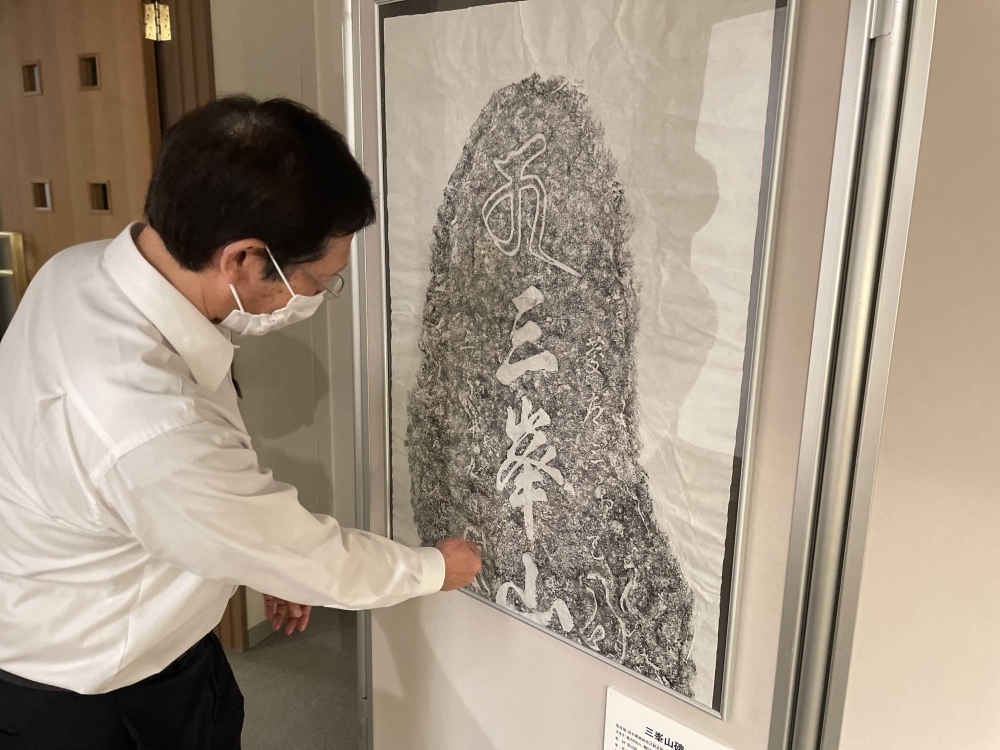
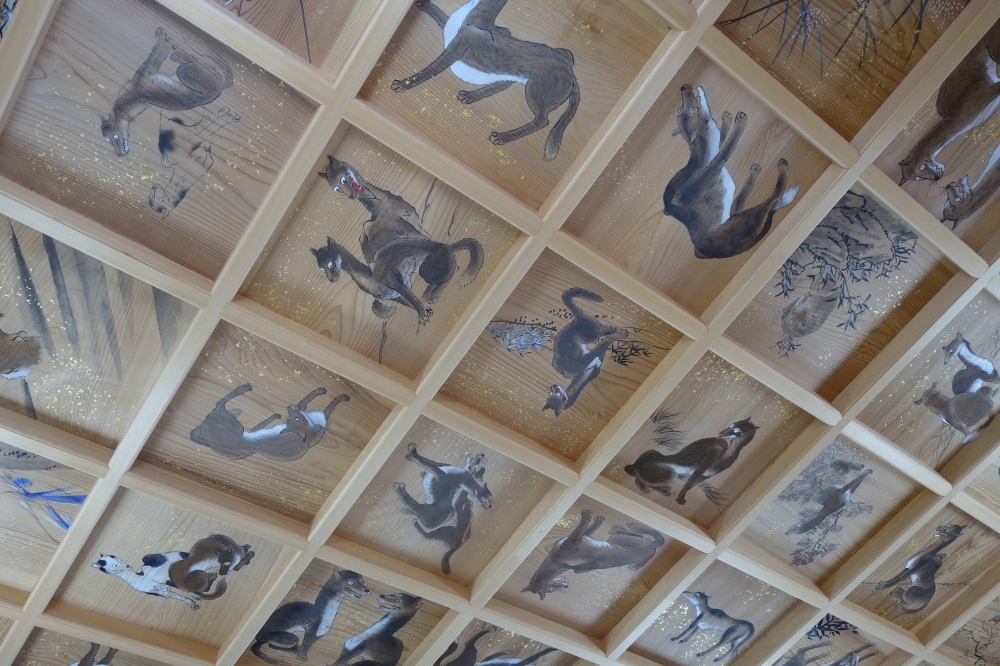
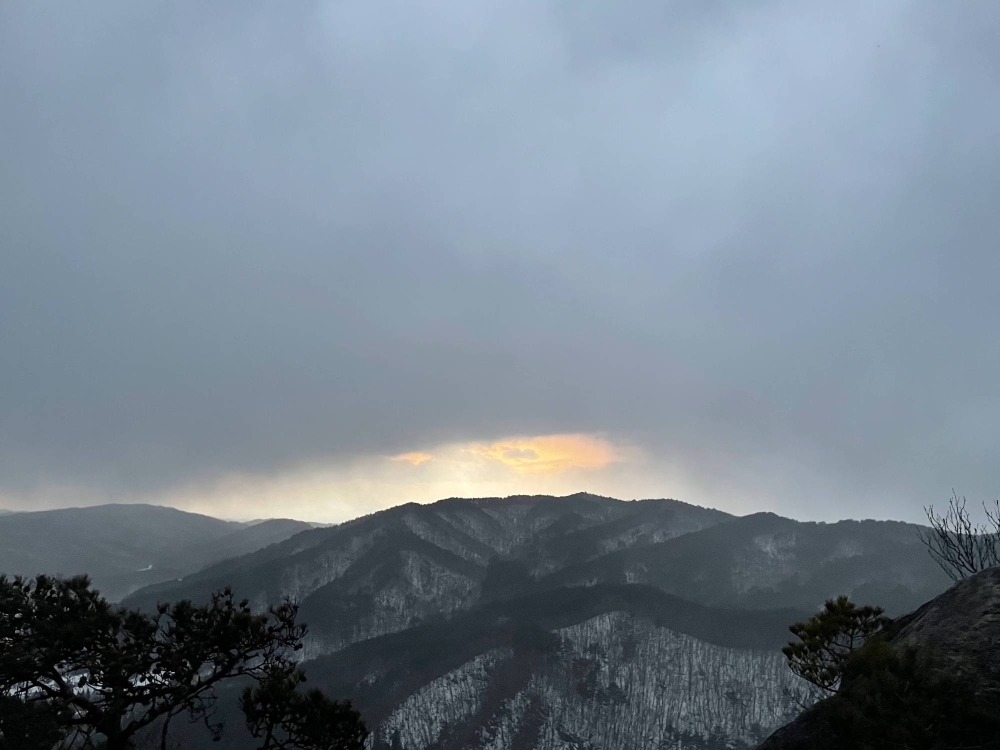
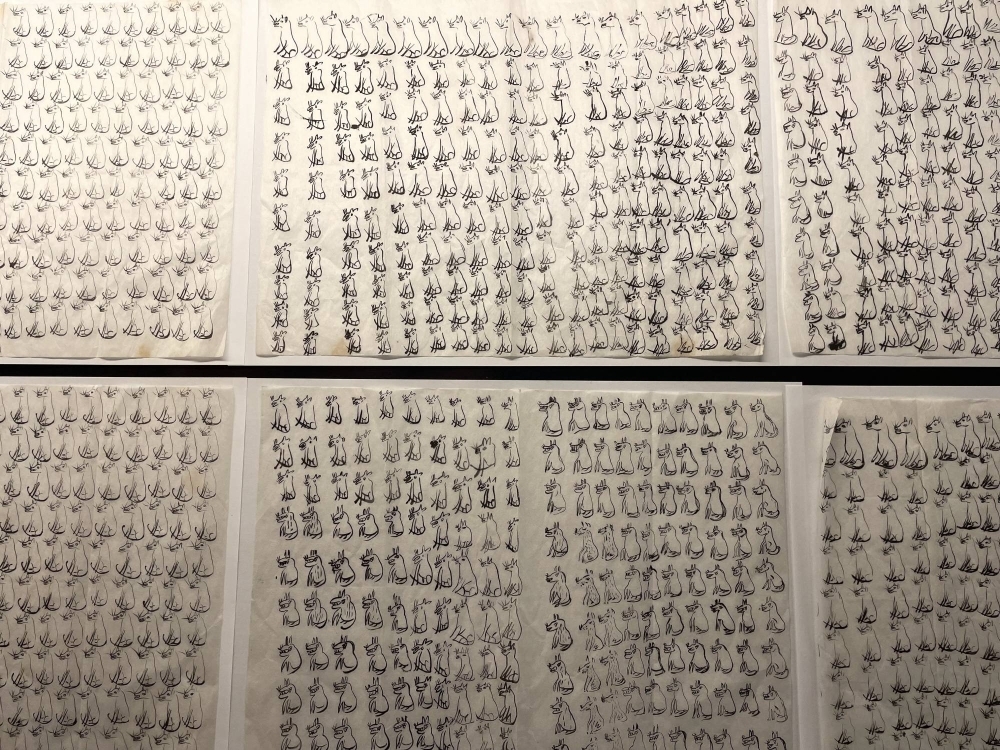
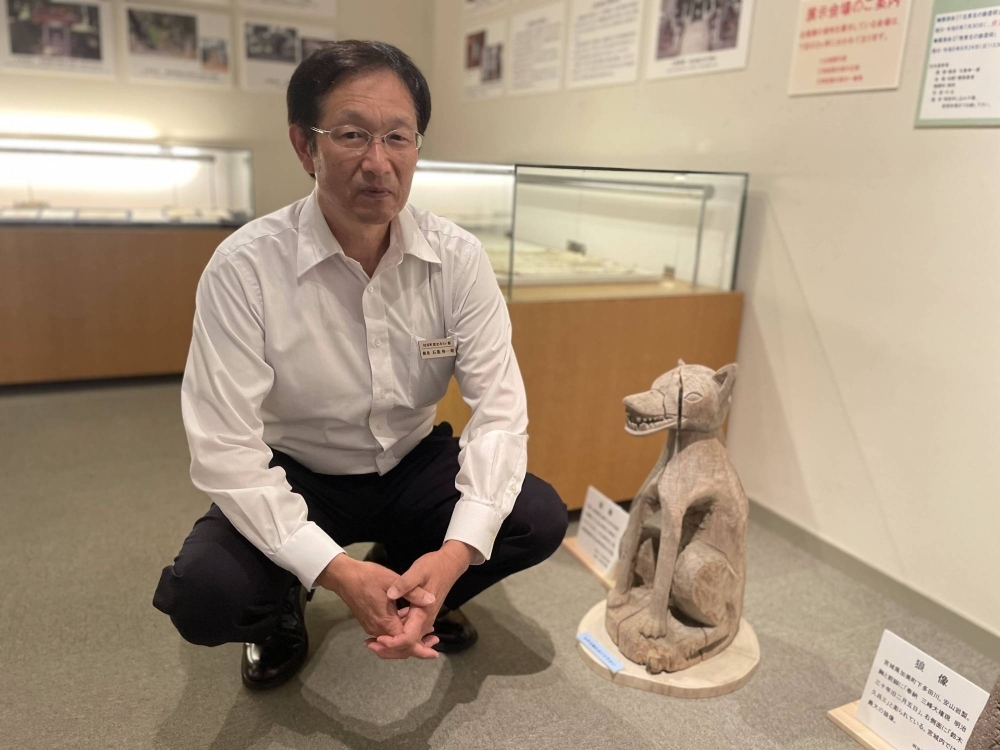
No comments:
Post a Comment